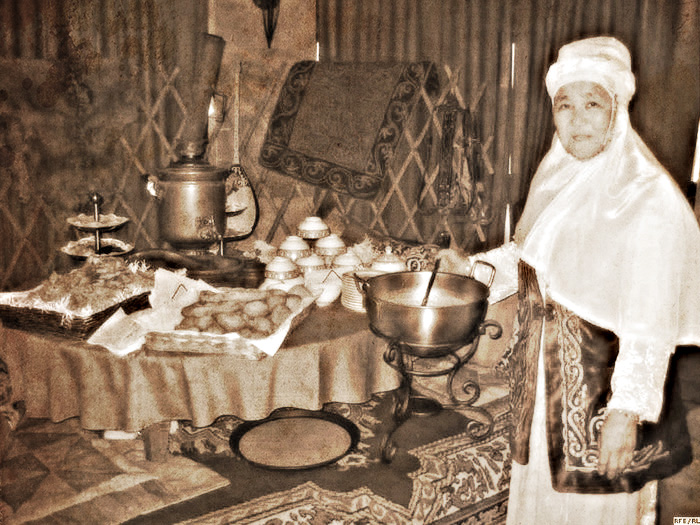
20.03.2017
1733
In ancient times people celebrated the New Year in March
According to our President, "the history says that Ancient Greece, Ancient Rome, Great Britain before the 18th century, and Ancient Rus until 1700 celebrated the New Year in March". Nursultan Nazarbayev reminds that it is customary in the East to talk about everything "good and kind, be optimistic and cheerful" on this day and that it is "a holiday of forgiveness and trust, it is very necessary for multiethnic Kazakhstan."
The holiday of Nauryz is preserved in the calendar of the peoples of such countries as India, Iraq, Afghanistan, Iran, everywhere in the territory of Central Asia and, of course, Kazakhstan. In the old days Nauryz was called "Ulys", this holiday was the New Year among the steppe nomads.
March 22 (9) is the first day of Nauryz, "Ulystyn Uly Kuni" (which means "Great Day of the Ulys"). The New Year at the nomads coincided with the day of the Great Equinox, when day and night became equal, in addition, during this period the cattle finished breeding. According to myths at night, from 21 to 22 March, old Kadyr bypasses and gives people happiness, prosperity and plants a tree. Wherever he looks, there the land will become fertile, and where it is too dry, there the stones melt under his gaze and become water that quenches the thirst of all life.
In the eastern legends it is said that during the time of Nauryz the midday spirit rises from the earth, bringing peace to all who are at war, healing all sick and feeble and light to all blind. From that day the people began to prepare for the summer season. All the difficulties were replaced by relief, cold with warmth, the snow-covered steppe was covered with flowers, herds of cattle and herds of horses were renewed and increased. That is why Nauryz is a holiday of universal joy, on which the entire nomadic people celebrate and had a good time.
In all auls, Nauryz's approach was felt long before the holiday itself. The yurts were transformed, flags fluttering above each, symbolized the belonging of the yurta inhabitants to a particular clan. The male part was engaged in clearing thawed springs, preparing places for nomad camps, the old people were given the chance to plant new trees. The female half was engaged in needlework, embroidery. To celebrate the holiday, people freshened themselves up, put on new clothes.
According to tradition, the elder should start the holiday with a blessing, which said that this is a great, new and holy day. He wished everyone big fare, a bright way in life, openness of souls, and asked to drive dark thoughts away forever. To the people he desired prosperity, so that all bad things would go to the ground.
A special place was allocated to the number 7 in the traditional celebrations of Nauryz. On the festive table exhibited exactly 7 subjects, each of them had its own sacred meaning. In large clay pots, a lot of butter was beaten. In addition to the traditional dish, Nauryz kozhe, a special seven-day koumiss was prepared in advance for the holiday table, which had a healing effect, and the men who tasted this drink could not sleep for a long time.
Nauryz kozhe is one of the main attributes of Nauryz, a ritual dish made up of 7 ingredients. It included a ram's head, meat, milk, rice croup or wheat, salt, water and onions. For the year to be full, Nauryz kozhe was eaten until you are satisfied. On the eve of Nauryz all the containers in the yurt were filled with ayran, kumys, milk, grain and pure spring water as a token of prosperity, harvest, rain and milk in the coming year.
The holiday was filled with joy, songs and games. From everywhere came the aytys, competitions were arranged between the girls and the boys. The game called "The White Buran" symbolized the struggle between winter and summer. The same meaning filled the aytys. Sports competitions were given a special place in the holiday: horseback riding, horse racing, wrestling and much more. The youngest took part in running barefoot. Ancestors believed that through bare feet the earth gives their children its warmth and strength. Young people had fun on the swings of the Altybakan, which are similar to those now called "bison" and are installed in some parks.
The most important on this day was a treat of Nauryz kozhe, good wishes and congratulations. Those who had previously been at war had to reconcile, exchange weapons and taste the food from the same kazan. This is a special rite of reconciliation. It was mandatory, even if at the end of the holiday it was necessary to fight again, but already the enemy's weapon. Holiday is a holiday, war is a war. With the onset of darkness, the festivities did not end, before dawn everyone tried to rise to some elevation and wait for the first rays of the rising sun.
By Makhabbat BOLSHINA
Translated by Raushan MAKHMETZHANOVA
Use of materials for publication, commercial use, or distribution requires written or oral permission from the Board of Editors or the author. Hyperlink to National Digital History portal is necessary. All rights reserved by the Law RK “On author’s rights and related rights”. To request authorization email to kaz.ehistory@gmail.com or call to (7172) 79 82 06 (ext.111).